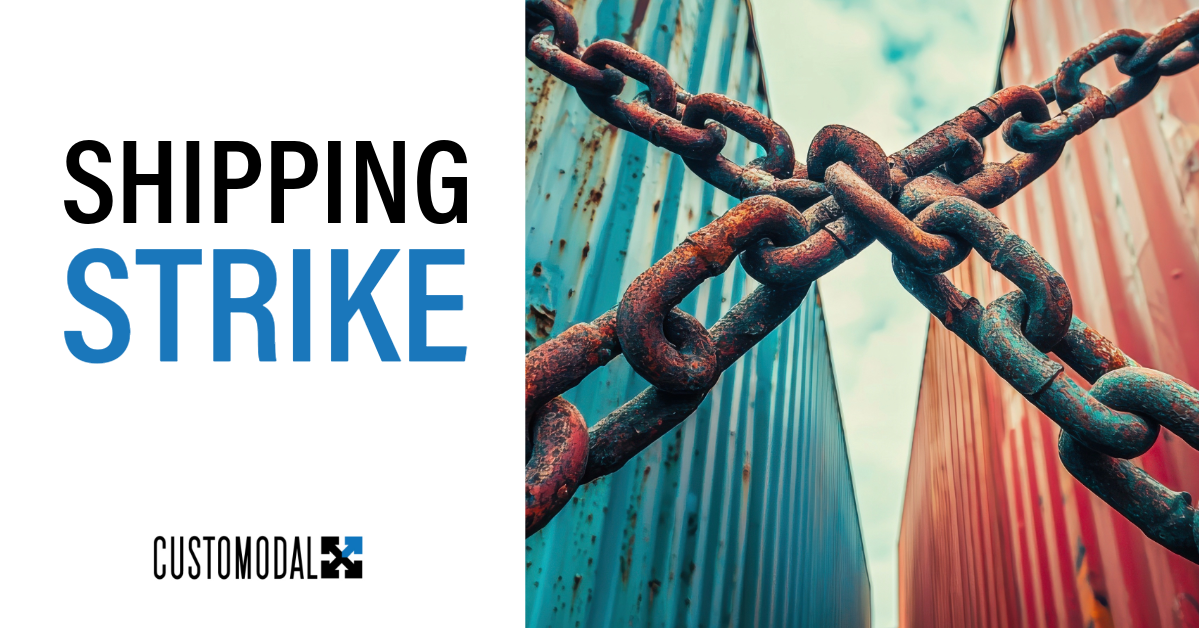
Are you truly leveraging the full potential of your freight operations, or are you still navigating the complexities of shipping with incomplete information? In today's fast-paced global economy, the days of relying on guesswork or reactive problem-solving in logistics are quickly fading. A significant paradigm shift is underway, moving from traditional, often manual processes to a proactive, data-driven approach that transforms shipping from a necessary expense into a strategic advantage. This evolution is powered by the insights gleaned from your digital freight platform. This blog explores how robust analytics derived from these platforms can empower you to make smarter freight moves, optimize your freight management operations, and gain a competitive edge.
Unlocking the Value Within Your Digital Freight Platform
Many businesses view their digital freight platforms primarily as transactional tools—somewhere to book shipments, track loads, and manage invoices. While these functions are undoubtedly crucial, they only scratch the surface of what these platforms truly offer. In reality, your digital freight platform is a powerful data generator, constantly collecting a wealth of information with every shipment you make. Think of it as a goldmine, constantly producing valuable raw material that, once refined, can unlock significant opportunities for improvement.
What kind of data are we talking about? The range is extensive and incredibly insightful:
-
Shipping lanes, origins, and destinations: Where are your goods moving, and what are the most common routes?
-
Carrier performance: How reliable are your carriers in terms of on-time delivery, damage rates, and transit times?
-
Cost per shipment: A detailed breakdown of all expenses, including linehaul, fuel surcharges, and often overlooked accessorial charges.
-
Freight classification and weight discrepancies: Are you consistently shipping within the correct classifications and weights, or are there areas for optimization?
-
Historical trends and seasonal fluctuations: When are your peak shipping periods, and how do they impact costs and transit times?
This raw data, in its unprocessed form, holds immense potential for logistics optimization with data. It's like unrefined ore – incredibly valuable, but it needs to be processed and analyzed to reveal its true worth and deliver actionable insights.
From Numbers to Knowledge: The Power of Freight Data Analytics
The real magic happens when this raw data is transformed into actionable knowledge through effective freight data analytics. This isn't just about looking at spreadsheets; it's about a systematic process that turns complex datasets into clear, understandable, and ultimately, useful information.
How do we transform these numbers into knowledge?
-
Aggregation and Normalization: Data from various shipments, carriers, and even different departments is combined and standardized to create a unified view.
-
Visualization: Complex data becomes digestible through intuitive dashboards, charts, and reports. Imagine seeing a clear graph of your carrier's on-time performance over the last quarter versus sifting through hundreds of individual delivery reports.
-
Trend Identification: Analytics tools help you spot patterns and trends that would be invisible to the naked eye. Are your shipping costs consistently higher on Tuesdays? Is a specific lane experiencing frequent delays? Once identified, these trends provide crucial "supply chain insights."
-
Performance Benchmarking: You can compare your current performance against historical averages, industry benchmarks, or even the performance of different carriers within your network. This helps you understand what's working well and where there's room for improvement.
For example, by analyzing your data, you might discover that a seemingly minor accessorial charge for re-delivery attempts is actually adding up to a significant sum over the year. Or perhaps, you identify that while one carrier offers a lower base rate, their consistent delays on a specific lane actually cost you more in expedited shipping or customer dissatisfaction.
According to data referenced by Statista, the global logistics market is expected to exceed $13.7 trillion by 2027, underscoring the sheer volume and complexity of operations. Within this massive market, companies effectively leveraging supply chain insights from data analytics consistently report significant improvements in efficiency, cost reduction, and customer satisfaction. The value of this kind of intelligence is undeniable.
Data-Driven Logistics in Action: Making Informed Decisions
This data collection and analysis aims to enable data-driven logistics, making informed, strategic decisions that lead to smarter freight moves. Here's how these insights translate into tangible advantages:
Enhanced Carrier Negotiation
Imagine walking into a negotiation with a carrier armed with precise data on their historical performance, transit times, and your actual cost per shipment with them. This is the power of data-driven negotiation. You can identify which carriers consistently meet your needs, which lanes offer the best value, and where there might be opportunities to negotiate better rates or service level agreements (SLAs). For instance, if your analytics reveal that a particular carrier consistently delivers 15% faster on a key lane, you can use that performance as leverage for a premium service, or conversely, identify areas where you might switch to a more cost-effective option without sacrificing essential service.
Optimized Route Planning and Mode Selection
Historical data is your roadmap to more efficient transportation. By analyzing past shipments, you can identify the most cost-effective and efficient routes, taking into account factors like transit time, reliability, and cost. This also extends to determining the optimal modes of transport. Is it more economical to consolidate several less-than-truckload (LTL) shipments into a full truckload (FTL) on a particular day? Or perhaps rail transport is a more viable option for certain long-haul routes when transit time is less critical. As we've explored in previous discussions, like the benefits of outbound freight route optimization, data provides the clarity needed to make these crucial decisions. Analytics might reveal that combining certain LTL shipments into an FTL on specific days saves 20% on freight costs due to increased route density.
Proactive Problem Solving and Risk Mitigation
One of the most valuable aspects of digital platform analytics is its ability to shift you from a reactive to a proactive stance. By analyzing historical data on common issues, such as port congestion, weather-related delays, or consistent bottlenecks on specific routes, you can anticipate potential disruptions before they escalate. This allows you to build more resilient supply chains, reroute shipments in advance, or even adjust inventory levels to mitigate the impact of unforeseen events. For example, if predictive analytics, based on past data, alert you to potential port delays due to an upcoming strike, you can proactively reroute your shipments through an alternative port or adjust delivery schedules.
Improved Budgeting and Forecasting
Accurate logistics optimization with data leads directly to more precise financial planning. With a clear understanding of your freight costs, you can develop more accurate budgets and forecasts, eliminating unpleasant surprises. Furthermore, by predicting lead times with greater accuracy, you can optimize your inventory levels, reducing carrying costs and improving overall cash flow.
Beyond the Basics: The Future of Digital Platform Analytics
The journey toward smarter freight moves doesn't end with current insights. The field of supply chain insights is constantly evolving, pushing the boundaries of what's possible with data.
We are rapidly moving beyond descriptive analytics (what happened) and diagnostic analytics (why it happened) into the realms of:
-
Predictive Analytics: Using current and historical data to forecast future trends. This could involve predicting peak seasons with greater accuracy, anticipating potential carrier capacity shortages, or even forecasting demand for specific products based on shipping patterns.
-
Prescriptive Analytics: Taking predictive insights a step further, prescriptive analytics not only tells you what will happen but also recommends what you should do about it. Imagine a system suggesting the optimal carrier and route for a specific shipment based on real-time conditions and your historical performance data.
-
AI and Machine Learning: These advanced technologies are further enhancing the power of digital platform analytics. Machine learning algorithms can identify subtle patterns in vast datasets that human analysts might miss, leading to even deeper insights and more sophisticated optimization. This is particularly relevant in areas like tech-powered precision for inbound freight, where complex variables are constantly at play.
Embracing this evolution is not just about keeping up; it's about gaining a significant competitive edge in a global market that demands efficiency and agility.
The Smart Move for Your Freight
In conclusion, the journey from raw freight data to smarter freight moves is transformative. It begins with recognizing your digital freight platform as more than just a booking tool—it's a critical source of valuable information. By leveraging robust freight data analytics, you can turn this information into powerful supply chain insights that drive data-driven logistics decisions.
The benefits are clear: enhanced carrier negotiations, optimized routes, proactive problem-solving, and more accurate financial planning. In today's dynamic logistics landscape, informed decision-making, powered by robust data analytics, is no longer a luxury but a necessity for achieving true logistics optimization with data. Platforms like Customodal empower businesses to harness these very insights, transforming their freight operations from a cost center into a strategic differentiator.





